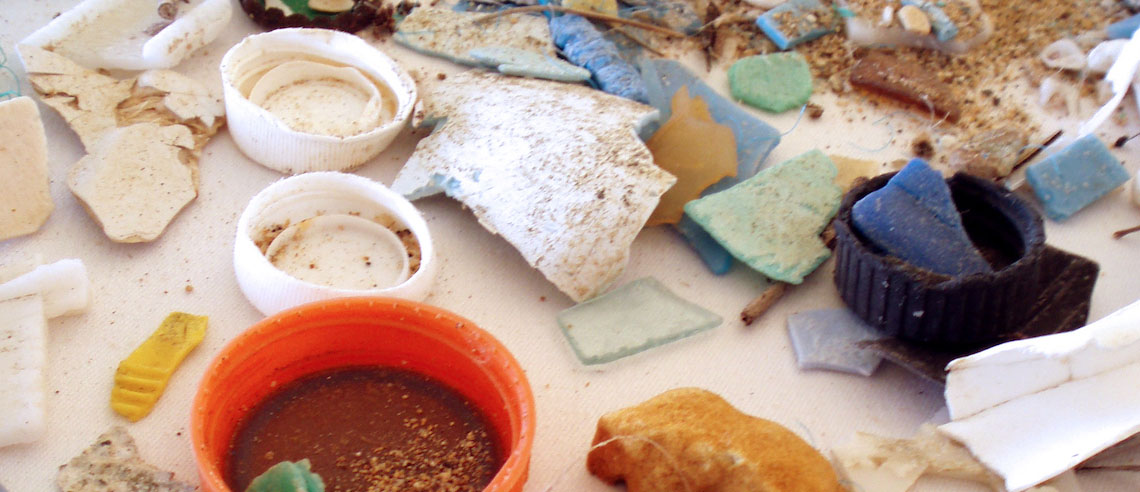Hazards, Large and Small
by Rona Kobell

These are uncertain and frightening times. We are almost a year into a pandemic that for many of us resembles an endless, Groundhog Day-like loop.
We face a real danger in COVID-19, and we can see the ramifications of the virus. At the same time, we are still grappling with other dangers we cannot see, including the ones from microplastics. The search for scientific understanding of COVID-19 and microplastics will continue for years to come, though with microplastics, there will be no vaccine. Scientists are not sure how long microplastics will be with us—in our water, our air, and our bodies—or what that means for our long-term health.
Microplastics are the tiny particles that are byproducts of manufacturing so many plastic bottles, bags, snack packaging, and other convenience items we use daily. Microfibers and microbeads, too, have become ubiquitous in the marine environment, coming from fleece clothing and personal care products.
Scientists are looking closely at these tiny hazards and trying to assess their harm and reduce their numbers. Neither is an easy task.
In this issue, we explore these dangers invisible to most of us. We’ll also talk about how Maryland Sea Grant is working with high school teachers to help them identify microplastics in labs with their students.
We’ll introduce you to the newest Maryland Sea Grant Knauss fellows. They are masters or PhD students in marine science or related fields who are spending a year in Washington, DC, learning policy. The placements include positions at the National Oceanic and Atmospheric Administration, the Department of the Navy, and a congressional office. It’s not the year they planned; most of our fellows are working remotely. They’ll be writing about their work on the Fellowship Experiences blog, which you can find on our website. Also in this issue, you’ll meet Amanda Rockler, a longtime member of the Maryland Sea Grant Extension team working in Montgomery and Howard counties as a watershed specialist. She is now also looking into microplastics.
And finally, we’re happy to introduce Wendy Mitman Clarke, our new science writer at Maryland Sea Grant. Wendy joins us from Washington College, where she was a writer, editor, and communications manager for eight years. An avid sailor, her award-winning work has appeared in Soundings, Chesapeake Bay Magazine, Smithsonian Magazine, and National Parks. Welcome aboard!
Note from the editors: Many of the photos in this issue were taken prior to COVID-19. Maryland Sea Grant is strictly following all University System of Maryland COVID guidelines, including masks and social distancing.


![[Maryland Sea Grant]](/images/uploads/siteimages/CQ/MD-Logo.png)